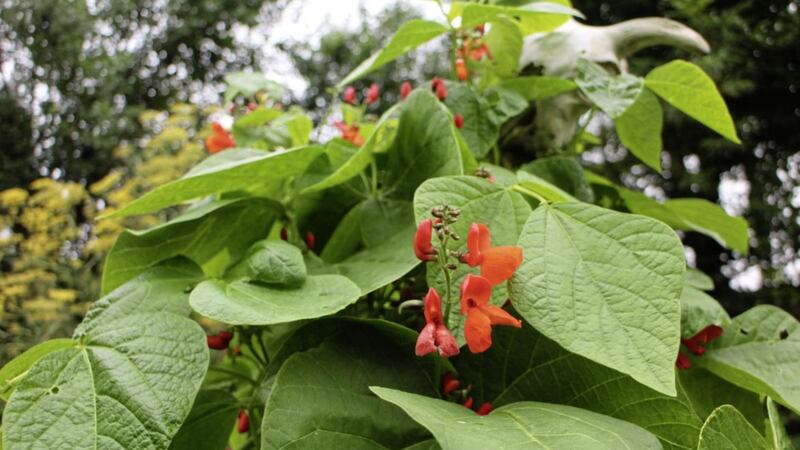THERE is a number of vegetables I regard as staples of the edible garden. Every year when it comes to deciding what to grow, this handful of crops are always on the list.
I'm like the football manager selecting the backbone of his side first, before adding subtlety and finesse. Chief among the mainstays are potatoes, courgettes, onions, lettuce and runner beans. The latter is not chosen so much for its gourmet appeal, as for its look and the legacy it leaves behind in the soil.
The runner bean (Phaseolus coccineus) is easily among the most impressive plants in the vegetable garden, providing height that rivals any sweet pea and eye-catching colour to match. As for its culinary credentials, I'm still not entirely convinced, finding the young pods a little coarse and the beans in their mature state too scarce.
French beans are the runner's more sophisticated, palatable cousin, so in recent years I've endeavoured to grow them instead, with limited success it must be said.
Last year, they were too leggy, while this year my first crop was struggling even before it had been planted out, damaged after being left outside during an especially cold May.
It's not been an entirely lost cause thanks to 'Korona', a dwarf, yellow, fast-cropping variety. However, only half the plants I sowed survived and therefore the yield has been modest.
Half anticipating my lack of success with French beans – perhaps they're just too sophisticated? – I sowed some runner beans at the same time. They are pretty much foolproof, just less desirable for the reasons outlined above. After a slow start followed by equally sluggish progress during the heatwave, the runner beans have begun to thrive over the past three or four weeks.
Witnessing the vigour of runner bean growth, it's not difficult to see where the inspiration came from for Jack and the Beanstalk. At 6 feet high, the support I fashioned from three lengths of driftwood is inadequate and has already been outgrown, the eight plants intertwining, implying they could easily climb to twice this altitude if there was something to hold onto.
The beans can be harvested very soon after they appear, the young pods eaten whole à la mange tout. Picking the pods will encourage the plant to produce more, providing a steady stream for several weeks. Mature pods are less amenable to being eaten whole and therefore it's necessary to shell them, extracting the beans from inside.
But even by the time the runner bean has produced plenty of lovely flowers and scores of pods to eat, its work is not yet complete. As a member of the fabaceae or legume (pod producing) family along with peas, lupins and clover, it will help fertilise the ground ahead of the next crop, a characteristic that makes beans and peas central to any crop rotation scheme and usually grown ahead of brassicas.
Legumes have an ability to 'fix' nitrogen in the soil and therefore provide fertiliser for the crops that follow. Together with a soil bacteria called rhizobium, the roots convert nitrogen in the air into nodules of fertiliser attached to the root of the plant. The runner bean plant uses much of the nitrogen as it grows but leaves some behind in its roots.









